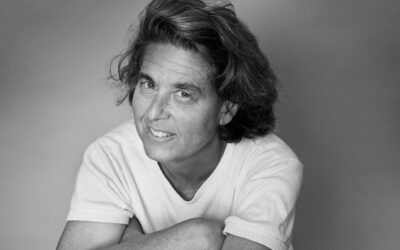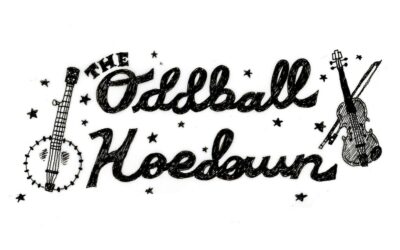Kathryn Harlan’s debut, a short story collection, captures minute fluctuations of intimacy and alienation within friendship and love. Contextualized by climate change and dominated by women, the book explores the boundaries between friendship, queer love, toxicity, desire and defined forms of belonging.
Figures are forever in stages of becoming. In “Algal Bloom,” two adolescent friends flirt with one another, daring each other to swim in a toxic lake. The threat of the encounter is a complex coming-of-age moment where a lake destroyed by prior generations lures the young friends to swim into an erotic encounter. As with their immersion in algae, the boundaries of Harlan’s characters consistently fluctuate throughout the book, turning into landscape or animal or other even as they reach through time periods and generations. In “Take Only What Belongs to You,” the protagonist, Esther, takes her girlfriend to D.C. to posthumously confirm that a beloved author of Esther’s childhood was a lesbian. The story privileges Esther’s own coming into queerness, for unlike the girlfriend, who had an “unwavering moment of recognition, how kissing a girl was such clear evidence, how everything being dealt with from there began from that point of certainty,” Esther “had an entire adolescence of baffled, stomach-aching love … of the silence and then the language unspooling uselessly into it.” Harlan adeptly embraces subjective uncertainty and instability through a remarkable precision of prose.
Humanness often elides with the animal and plant: “When Vienna laughed, her mouth became a new animal,” or “Aunt Vera was contained like a dead bird in a cardboard box,” or later on, “She’s laid Naomi bare like a moth pinned to paper.” But animals are present in and of themselves, too, particularly pregnant ones — for instance, when “Dorothy sees that one of the cows in the next field is pregnant. She sees the fetus curled inside, its pink, alien body translucent and veined with dark blood, the flat moonstone of its underdeveloped eye,” or the description of parental habits of various insects and birds in “The Changeling” — “I was thinking about a kind of wasp that laid its eggs in caterpillars. Parasitoid wasps, which instead of stingers have a needle-sharp ovipositor and deposit their larvae beneath the host’s skin.” The stories interrogate conceptions of humanness, simultaneously illustrating the way daily interactions bring out different traits and how our supposedly non-human landscapes have been so permeated by human industry as to make them no longer natural.
There is something dangerous about the instability of these constant transitions between states. They are both material and psychological yet banal enough to be easily overlooked, except for the language. Harlan’s metaphors capture each change, fixing it in space and memory. She plays this idea to extremes, teasing out the erotic potential and nourishment of more-than-human flux. In her title story, “Fruiting Bodies,” the beloved, Agnes, grows mushrooms on her body and feeds her beloved. “I ate of my lover between her breasts, and held the little heads of the enokis in my mouth for her to taste. I ate of my lover at the musty crease of her belly, where the smallest frill of oyster mushrooms had begun.” Any certainty about what defines any of us therefore becomes flexible in this book, non-intrinsic, affording the magic of shape shifting in prose to amplify the ways in which definition is somehow arbitrary, necessary and potentially violent. “Nothing magical is safe, nothing safe is magical.”
The landscape in these stories is as important as the characters. An awareness of wildfires peppers characters’ conversations. Lakes are not passive bodies for swimming but dangerous realms of systemic toxicity and psychological expression. The destination of Glacier National Park for two sometime-lovers on a final road trip becomes a tourist excursion to absence. “The sign told me that in fifty years, 85 percent of the ice had melted. The sign told me that they expected it all to be gone by 2030.” While currently teaching writing at the University of Wisconsin, Harlan’s master of fine arts alma mater, it makes sense that the California native might be particularly aware of the reciprocal impacts of climate change and subjectivity. California is regularly affected by wildfires, drought, insect infestations and heat waves. But Harlan’s characters try to adapt to their precarity. They fall into love and friendships saturated with ambivalence and fraught attachments, asking, what is love at the end of a world? Harlan often mentions bones, algae, corn stalks, glaciers, skin, dead fish, soft animals and translucent or porous skin, as though each story contains a sublimated recipe of items (and related themes) whose ratios combine in different ways, bringing their distinct worlds to life.
Fruiting Bodies captures an uncynical approach to growing up in a world of ecological duress where no “away” exists, no not-human place, no pristine alpine landscape to stage the perfect Universal Forever Love Pop Song. The absence of that fantasy instead has presence, troubling the lives of characters as they attempt to forge their own way towards self-discovery. Even with the danger of inevitable disappointment, the characters in Fruiting Bodies maintain an appetite for intimacy, stories, magic and knowledge despite — or even because of — their fraught contingency.



